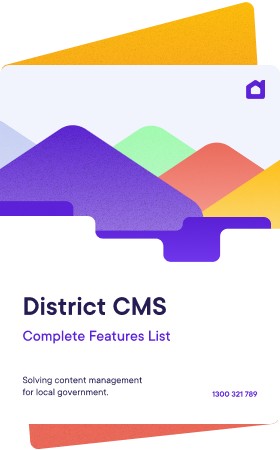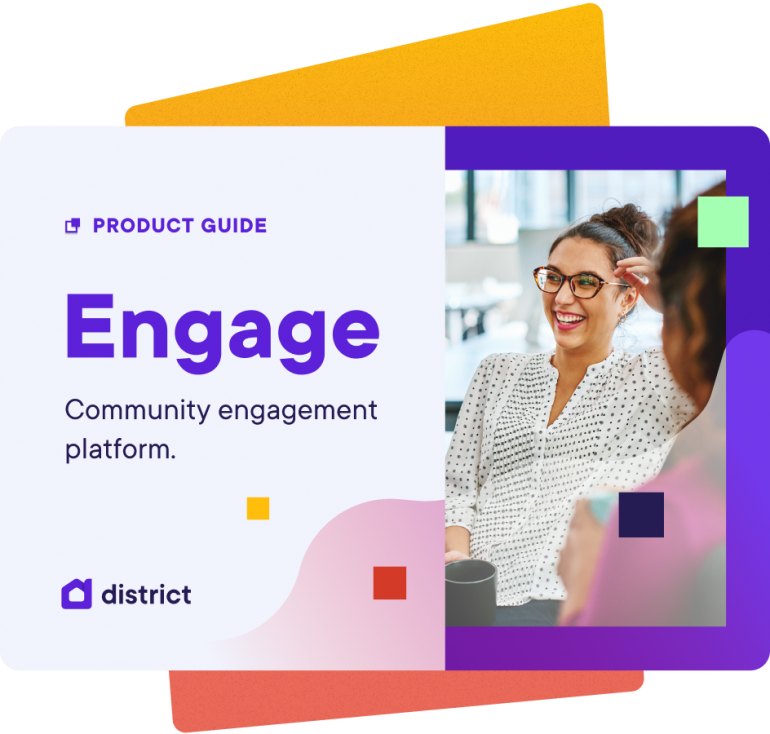In the modern workplace, people have a staggering amount of content shared with them each day. As a result, they can find it progressively more difficult to determine which content is relevant, and whether or not to respond to it. It’s an ongoing battle that the corporate world has been fighting for some time.
And, of course, governments on all levels are facing the same issue.
Imagine you’ve just sent out an important memo or email - or any number of other time-sensitive internal communications. You’re expecting a response, only to encounter radio silence on the other end.
Sound familiar?
Add to that the growing trend towards deploying third-party apps and project management platforms in government departments, and it’s easy for critical communications to get lost. So how can you securely centralise all of that information and help your employees to navigate it seamlessly while staying interconnected?
District Intranet can help by becoming the digital heart of your internal communications system.
What is District Intranet?
District Intranet provides a central digital hub for government employees to gather and share information internally. It offers an effective intranet platform that increases productivity via standard messaging templates, publishing workflows and powerful search tools.
A connectivity powerhouse, District Intranet amplifies employee engagement and reduces data silos across departments. It becomes a fully integrated solution for all your processes, people and information – and keeps them centralised in one place.
District Intranet is as adaptable and creative as your organisation, working in sync with governments to effectively manage content and internal communications. But most importantly, it meets your business needs while promoting and reinforcing your employee engagement.
With a variety of interfaces and under-the-hood customisations, District Intranet’s comprehensive toolbox includes:
- a fully customisable user interface
- bespoke system integration
- a modular user dashboard
- centralised asset management
- a component-based page builder
- company-wide personalised notifications
The backbone of an effective intranet
District Intranet helps to improve productivity and employee engagement through unified content management and distribution in eight different ways.
1. Reducing information silos
Sharing essential content with government employees can be a logistical minefield, even when they all work in the same building. With multiple departments, important information can end up buried in silos. At the same time, though, sharing too much non-essential information leaves employees struggling to identify what’s relevant and what isn’t.
Of course, work today is often not confined to the same physical office, or even the same time zone. Many government employees now work from home at least some of the time, and District Intranet can support this with easily accessible, user-verified content sharing.
It works to connect users and foster a stronger, more sustainable digital culture.
2. Quickly onboarding new employees
Bringing new employees up to speed the traditional way can take time and effort. But creating, syncing and managing user profiles in a comprehensive staff directory can make the task far less painful. As a bonus, it can help new hires to start contributing effectively to your team and its projects far more quickly.
District Intranet lets you rapidly deploy content with standard templates to facilitate easier collaboration, with accessible documents and folder structures. For example, government departments can maintain and update all policies and procedures in one convenient place, quickly building a cohesive working environment.
3. Increasing remote working and learning opportunities
With the shift towards working from home, government organisations have had to readjust and develop new ways to maintain a solid culture and consistent interpersonal connection. Agencies and departments need to ensure that those working remotely have access to the same content as employees who are physically on-site.
District Intranet centralises your digital asset management so you can easily share the content that you need to. Employees can access content from any remote point via our powerful Solr search engine, providing them with the same learning and professional development opportunities as their on-site counterparts.
4. Reducing administrative overheads
District Intranet also plays a major role in how your employees access self-service tools. It eases the burden of unnecessary administration costs by enabling staff to control which information they share and access themselves.
And to actively encourage employees to use these services, District Intranet offers a simple-to-navigate interface for:
- updating their personal information
- accessing their financial information
- accessing project data
You can also create other custom fields for staff to access that will improve their productivity.
5. Creating an engaged, connected workforce
The link between employee engagement and internal communications has never been more apparent. Each employee needs to know their value within the organisation and where their department is heading. This is an essential principle of nurturing collaborative best practices.
An engaged employee stays aware of current policies and procedures, while at the same time adapting to meet any major organisational shifts.
District Intranet streamlines the task of keeping employees informed and up to date via its simple interface and company-wide, personalised notifications. As a central hub, it can bridge gaps between staff who might not otherwise connect, communicate company objectives and recognise employees for their great work.
6. Giving leaders a face and voice
In many government organisations, employees can get into the habit of focusing solely on their own jobs or departments, it’s just natural. In this environment, keeping organisational leaders in view and front and centre of the business can be challenging.
District Intranet provides a way for executives and other leaders to communicate directly with all employees. Senior personnel can efficiently communicate with staff via both informal and more formal channels, increasing their own visibility and that of the organisation’s direction and strategy.
7. Ensuring that information doesn’t get lost
Many workplaces use a combination of multiple third-party communication platforms, such as email, Slack and project or task management apps. Working across disparate systems can result in valuable content getting lost between one system and another. And unfortunately, without a uniform system for organising the information, these kinds of third-party apps can create a barrier to quickly accessing necessary information.
District Intranet archives all of your vital messaging in one place – keeping everything organised and always at your fingertips for easy access and retrieval when needed. No more searching through chat windows, direct messages or cluttered inboxes.
And even better, important documents are always searchable and in reach when they’re needed most.
8. Keeping information safe and secure
Another downside of communicating important information via email or external network platforms with international servers is the risk of foreign governments acquiring the data. The best way to safely share and access internal information is to centralise your communications and keep them in-house.
To ensure data security, District Intranet adheres to all data compliance regulations and strict data governance. Additionally, we can host and store all data in Australia or your country of choice, mitigating this risk for your organisation.
Put an effective intranet at the heart of your online communications
District Intranet’s flexible, simple design and permission-based controls ensure that your internal communications get to the right person at the right time. Whether your employees work one office over, from home or internationally, a digital integrated hub for all content and data will boost their productivity, engagement and connectivity.
As a result, it will ultimately improve your culture.
Centralising your information builds a strong, connected communications environment that fosters collaboration and lets everybody participate with ease.
Take the next step and safely, securely transform your internal communications.







